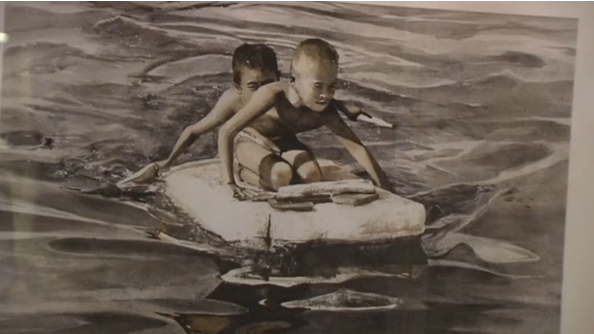
MANILA, Philippines (Reuters) — Polluted river water became fresh inspiration for a team of Filipino artists who have made watercolor paintings using dirty water pigments.
As part of a social awareness project by advertising agency TBWA\Santiago Mangada Puno, nine artists were commissioned to paint images using pigments taken from six contaminated rivers in the Philippine capital.
Sediments were extracted from the river water to produce dark, earthy pigments that were sterilized to avoid bacterial contamination.
Each painting depicted everyday scenes found along Manila’s riverside, from children taking a dip in polluted water to people taking shelter under a bridge.
Artists took careful attention to using watercolor as a tricky medium and the challenges of using an unconventional pigments.
“At first it was difficult because it was the first time I experienced using dirty pigments, and second was the smell. Although the pigments have already been decontaminated, the smell of the sludge was still present, so that was a big challenge for us artists,” said JC Vargas, one of the artists.
It took the team six months to mount the exhibit they called “Dirty Watercolor” at a mall in Manila.
The project aimed to promote awareness of environmental degradation and the condition of people living near polluted tributaries.
“The common element in all these paintings is that we portray mostly the children and the families that live along the Pasig River, so that quality of showing that the people who enjoy the water and at the same time not aware of that danger of swimming in polluted water should make us aware on the need to keep the Pasig alive,” said Cid Reyes, the curator.
The watercolour paintings fetch a price between 40,000 pesos to 120,000 pesos ($851-$2600), with proceeds going to a local charity fund in charge of rehabilitating the polluted rivers.
Pasig River is one of Manila’s longest river and was considered as “environmentally dead” by ecologists due to it’s highly polluted water content.
The Philippine government and several non-government organisations have been trying to clean-up Manila’s polluted rivers since the 90s, but has seen little development.
Environment activists said poor law enforcement on garbage segregation and environmental protection were the reasons for waste problems in the Philippines.
The National Solid Waste Commission said on its website that close to 9,000 tonnes of garbage is collected in Manila daily.







